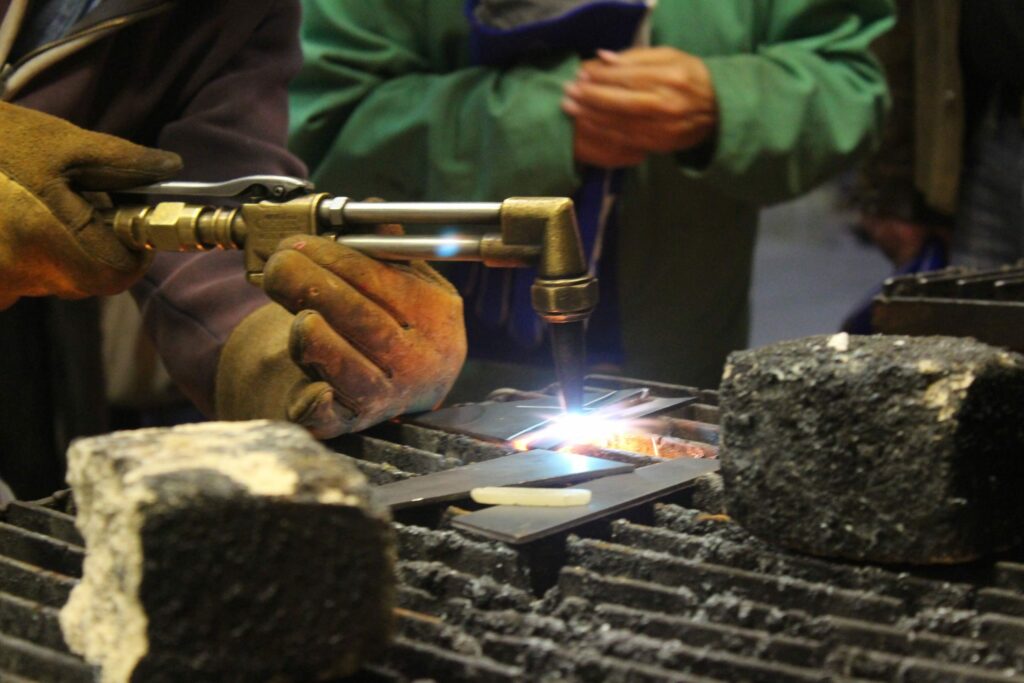Metalworking, an art as old as civilization itself, combines skill, precision, and the right tools to shape metal into functional and aesthetic objects. Whether you’re a seasoned artisan or a novice eager to explore this venerable craft, understanding the essential equipment is the first step towards metalworking mastery.
This blog post will unveil the tools and machines that are fundamental to shaping, cutting, and joining metals, guiding you through the core apparatus that every metalworker needs in their arsenal.
The Cornerstone of Metalworking: Lathes
A lathe is an indispensable piece of equipment in any metalworking shop. Used for turning metal, it rotates the workpiece against a cutting tool to shave off unwanted material, creating cylindrical parts with precision. From simple pens to complex engine components, the lathe’s versatility makes it a foundational tool for any project requiring symmetrical shapes.
Milling Machines: Precision in Material Removal
While lathes excel in cylindrical shapes, milling machines are the go-to for creating a vast array of geometries in metal. By rotating a cutting tool against a secured workpiece, milling machines can cut slots, drill holes, and create complex surfaces. With capabilities ranging from manual operation to CNC (Computer Numerical Control) precision, milling machines are pivotal for tasks demanding tight tolerances and intricate designs.
The Art of Joining Metals: Welding Equipment
Welding is the process of fusing two pieces of metal together, a critical skill in both construction and creative metal art. Various welding techniques require different types of equipment, including:
TIG Welding: Ideal for thin materials and fine work, TIG (Tungsten Inert Gas) welding offers control and precision, making it perfect for detailed artistic projects.
MIG Welding: MIG (Metal Inert Gas) welding is versatile and relatively easy to learn, suitable for a broad range of projects from industrial fabrication to hobbyist repairs.
Stick Welding: Known for its simplicity and effectiveness in outdoor conditions, stick welding is a robust method for heavier materials and construction projects.
Plasma Cutters: Precision Cutting Technology
When it comes to cutting metal with accuracy and speed, plasma cutters are unparalleled. Using a jet of hot plasma to slice through metal, these tools can make quick work of steel, stainless steel, aluminum, and copper, offering a level of precision that mechanical methods struggle to match. Plasma cutting is particularly valued in metal art and custom fabrication for its clean cuts and efficiency.
Shaping and Bending: Press Brakes and Sheet Metal Tools
Creating bends and folds in metal with precision requires the use of press brakes and other sheet metal tools. Press brakes apply force to a clamped workpiece, creating folds at desired angles—essential for fabricating everything from industrial machinery to bespoke furniture. For more intricate bending work, tools like sheet metal benders and rollers allow for the shaping of metal into curves and tubes, expanding the creative possibilities in metalworking projects.
Grinding and Finishing Equipment
The final appearance of a metal project often hinges on grinding and finishing processes. Bench grinders, angle grinders, and sanders are used to remove excess material, smooth out surfaces, and prepare metal for finishing touches. Polishing tools and buffing machines add the final sheen, transforming the workpiece from a rough form to a finished product with aesthetic appeal.
Precision in Metal Slitting: The Role of Slitter Machines
Slitter machines, specialized tools in the metalworking industry, are designed for cutting or ‘slitting’ large rolls or sheets of metal into narrower strips without altering the material’s original quality. This equipment plays a crucial role in preparing metal for various applications, from automotive and aerospace components to everyday consumer goods.
Featuring high-speed blades and precise adjustment capabilities, slitter machines can handle materials of varying thicknesses and types, including steel, aluminum, and copper. The precision and efficiency of slitter machines not only increase productivity but also ensure the consistency and quality of the metal strips, making them indispensable in the metal fabrication process.
Enhancing Skills with Modern Technology
Advancements in technology have introduced new dimensions to traditional metalworking practices. CNC machines offer unparalleled precision, enabling the automated production of parts with complex geometries. 3D printing in metal opens up new avenues for prototyping and small-batch production, blending age-old techniques with the frontier of manufacturing technology.
Metalworking is a craft that marries ancient techniques with modern technology, demanding not only creativity and skill but also a deep understanding of the essential equipment. From the precision of lathes and milling machines to the fusion achieved through welding, and the shaping capabilities of press brakes and plasma cutters, each tool plays a pivotal role in bringing metal creations to life. Whether you’re forging a career in industrial fabrication or pursuing the art of metalwork as a hobby, mastering these tools is the first step towards achieving metalworking mastery. With the right equipment and a commitment to safety and learning, the possibilities in metal

